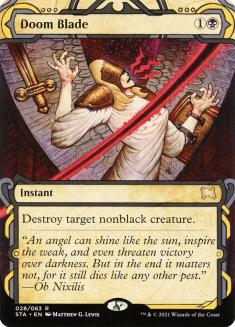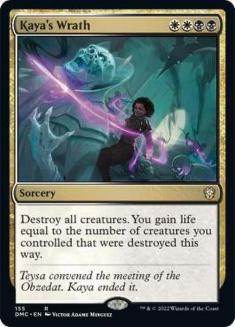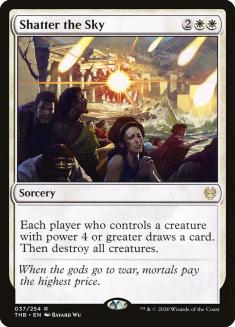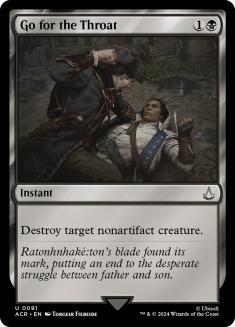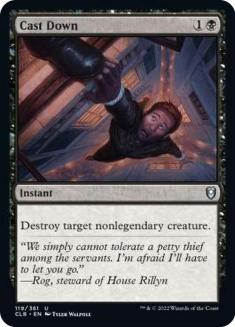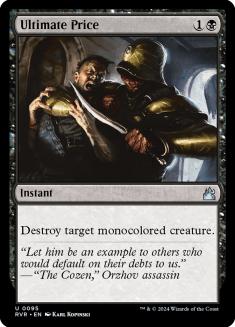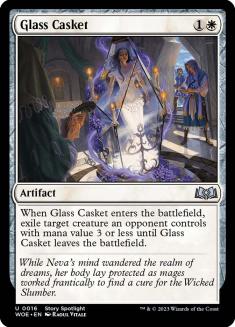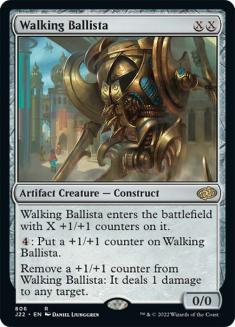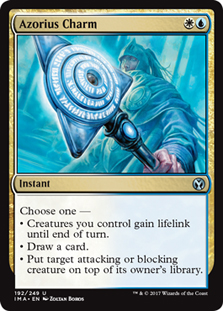With the weakening of spells over the last decade, Magic has become a very different game since I started back in the late 90s. I remember chuckling to myself as my opponents saved up mana to cast their prize creature, only to have it exiled with a cheap Swords to Plowshares. A one-mana for a four-mana exchange was fair game then because the answers were more powerful than the threats. Even a card like Wrath of God made control players rejoice, guaranteeing an absolute answer for a battlefield overrun with monsters. Each of these spells kept returning to us, set after set, even if they were slightly weakened.
Doom Blade and Day of Judgment feel like recent additions; however, it has been many years since these cards existed in Standard. There were many articles produced by Wizards of the Coast (WotC) at that time, explaining that the direction of Magic was changing from these universal removal spells. Doom Blade was simply too good, dealing with most of the format with relative ease. Instant-speed removal was going to start having restrictions when the mana cost is two, not seeing that universal aspect until you hit three mana. This was a blow to control players across the globe because creatures were on the rise and removal spells were on the decline.
Having the power level of creatures increase at the same time removal spells’ power decreased was tough for me to adjust to. I remember doing a lot of complaining, lighting the torch of protest for the perfect format being degraded. Aggro and midrange ruled the metagame, while control fell to fringe play. Eventually, I realized that the game was not ruined after all. Spells were too powerful and creatures needed a boost. We began to see more enters-the-battlefield triggers and durability built into creatures, stretching the capability of the new, weakened removal.
Fast forward to 2020, and you’ll see that things have gotten a little better for the heroes.
Kaya’s Wrath and Shatter the Sky are two perfect examples of the sweeper embargo being broken. With the domination of creatures over the last few years, WotC decided to fold back in four-mana sweepers and it has helped control return to the front lines of the metagame. Kaya’s Wrath was a bit restrictive in mana cost but helped Esper Control remain in the top decks discussion for the majority of the season. Shatter the Sky is an even better example of the four-mana sweeper returning to its former glory, offering just a small advantage to the player that controls a large creature. We’ve learned over the years that sweepers that cost five mana do not have enough upside to justify the extra cost. Having an answer to an army of creatures on Turn 4 is a must and the development ban was finally lifted.
Sweepers aside, we were still in an existential crisis for targeted removal. There were plenty of strong options at three and four mana over the years, spells that gained life, exiled things, and hit more than just creatures. While that’s a nice addition to the control package, players need access to cheap removal that can be as close to Doom Blade as possible. Cards like Cast Down, Ultimate Price, and Go for the Throat are strong flagbearers for this type of effect, proving the R&D prowess that goes behind creating these types of cards.
A card like Cast Down, in a set full of legendary creatures, should have been used sparingly. It’s tough to fathom playing three or four maindeck copies of a card that does not destroy the creature that’s showcased in that exact set. With all three examples, the employees at WotC were able to dust their shoulders off with pride. Cast Down was a dominant piece of removal in a legend-themed block, Ultimate Price made us all feel safe even with multicolored cards running amok, and Go for the Throat had no issue being a format staple even with artifact threats everywhere. These attempts at marginally dropping the power level of two-mana removal spells right below Doom Blade were all successful, making today’s preview card a favorite to rule.
Heartless Act may be the best removal spell printed in recent memory. It will immediately become a must-play in any black deck in Ikoria Standard, as well as see plenty of use in Modern and Pioneer. Pioneer has been looking for a removal spell to join forces with Fatal Push and it has finally arrived. Very few creatures in the older formats come with counters on them, making Heartless Act as clean a removal spell as Doom Blade was in its heyday. The Modern implications will depend on what black decks require more removal spells than just Fatal Push, but if the demand arises, Heartless Act will answer the call.
Preview season has some older-format implications, but most of the attention is focused on Standard. The removal spells that black had access to before this were mediocre at best. Tyrant’s Scorn saw play in decks that had access to both colors, but Heartless Act is a much better card in a vacuum. Even if there are disastrous occasions where creatures with counters are dominating the tournament scene, there will be enough creatures in those decks that fall victim to this removal spell to make it as good as Cast Down, Ultimate Price, and Go for the Throat were.
Black-based control decks have fallen behind due to the rise in Azorius Control. There’s a lot to love about blue and white spells these days; however, a strong removal spell is enough to get people talking about alternatives. Glass Casket is not a premier removal spell and it’s frankly a bit embarrassing to play. Sorcery-speed, fragile, and limited, Glass Casket barely sees play in Azorius Control and it’s an on-color, two-mana answer to a lot of creatures.
The amount of aggro out there should be enough to compel any control player into running multiple copies of any passable removal spell in the early turns, but instead they bank on the power of sweepers, hoping to make it there in time. This has made matchups like Mono-Red Aggro tricky to master, as the first game is all about the opponent stumbling. Heartless Act is a game-changer in this type of matchup, making the early-game defensible even without an early The Birth of Meletis. Not only does this handle aggro in the early-game, it provides cover against most matchups in the late-game.
Glass Casket, and similar weak removal spells, typically do not make the cut in the top decks. It’s more advantageous to rely on the powerful mid-game removal and sweepers than risk drawing the early riffraff later. Having a Turn 7 Glass Casket may not be great against most of the decks in the format, but a Heartless Act will save the day. As universal as it gets, Heartless Act handles creatures on Turn 2 and in the late-game, making it a staple of every black deck moving forward. Somehow, having this type of range wasn’t enough for the folks making this card and they added one more sweetener to the pot.
Some creatures will come barreling in with counters, but Heartless Act has a provision for them too. A Walking Ballista is a dangerous threat in Modern and cannot be touched by the front half of this removal spell. Luckily for us, Heartless Act can take out an early Walking Ballista with ease. It can remove up to three counters, killing creatures that depend on them for toughness. Even in the current Standard, removing three counters from a land animated by Nissa, Who Shakes the World or a Hydroid Krasis can save your life. There are very few matchups where Heartless Act will not be useful, and in those scenarios, most removal spells would probably get removed for the sideboarded games.
Heartless Act will not only revolutionize black decks but create new ones. New midrange, aggro, and control decks are forged from the printing of one new card. Without Dream Trawler, Azorius Control would never have dominated the beginning of this format. The same can be said about Nissa, Who Shakes the World and her impact on green-based decks since her release. These examples are flagships from the different archetypes, but sometimes the uncommon removal spell can bring new life into a metagame.
With the introduction of Pioneer, Azorius Control immediately became the front-runner for players like us. This wasn’t because of Teferi, Hero of Dominaria or even Dig Through Time. The reason why Azorius Control was even applicable in Pioneer was the existence of Azorius Charm. Azorius Charm is a decent removal spell, but not something that anyone would spend a lot of time thinking about. It has cycling built in, making it more palatable for folks like me who like to destroy creatures, not place them on top of libraries. Even with some minor criticisms, I acknowledge that without Azorius Charm, the deck would be completely unplayable.
One removal spell can make or break a deck, which is what Heartless Act will do. I expect to see more black-based control decks rise to the challenge, but there will be a boost in midrange decks that hedge against its aggro matchups with this new weapon. Even if Azorius Control is the best control deck after the dust of Ikoria: Lair of Behemoths settles, Heartless Act will be highlighted on my Excel Spreadsheet as the best removal spell in Standard.



